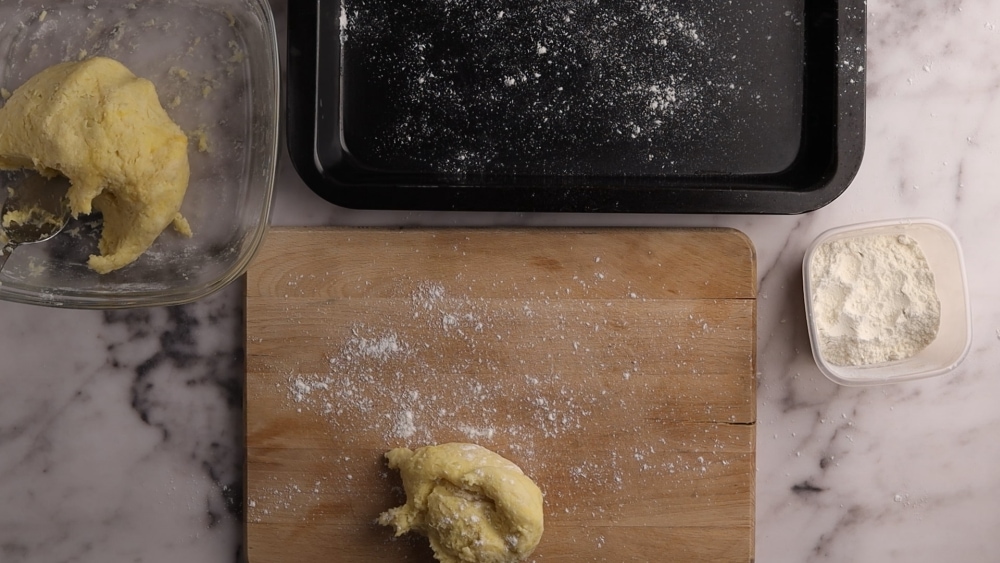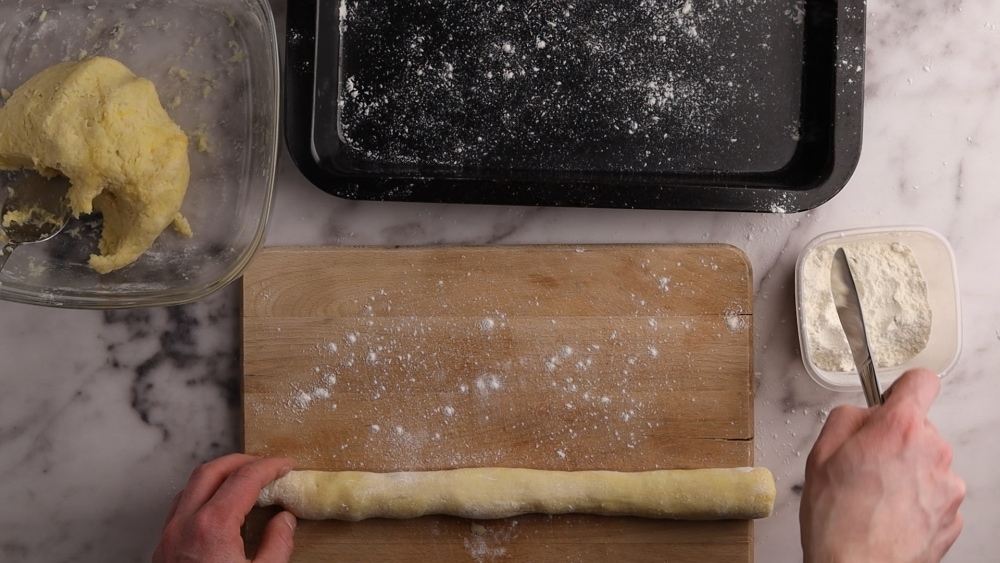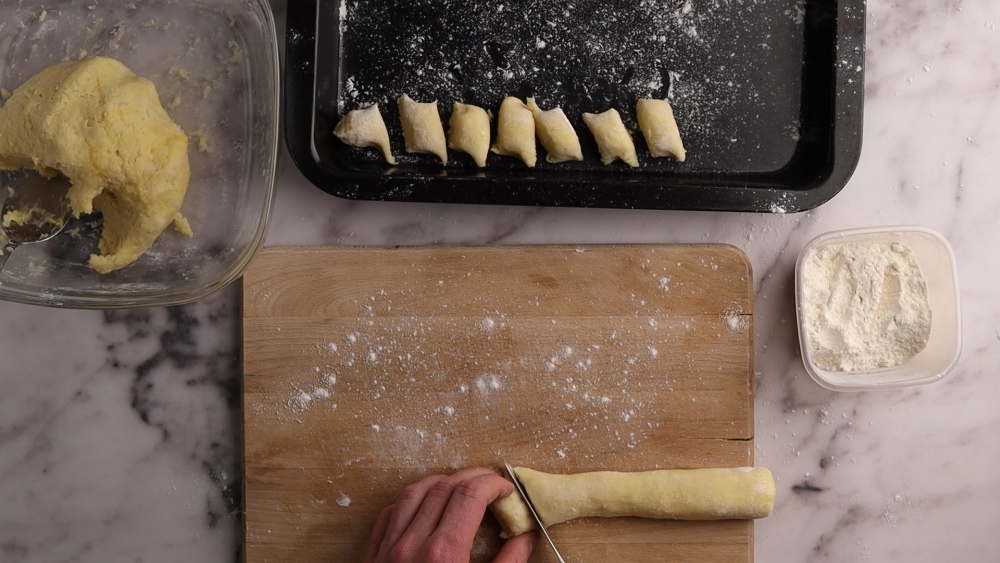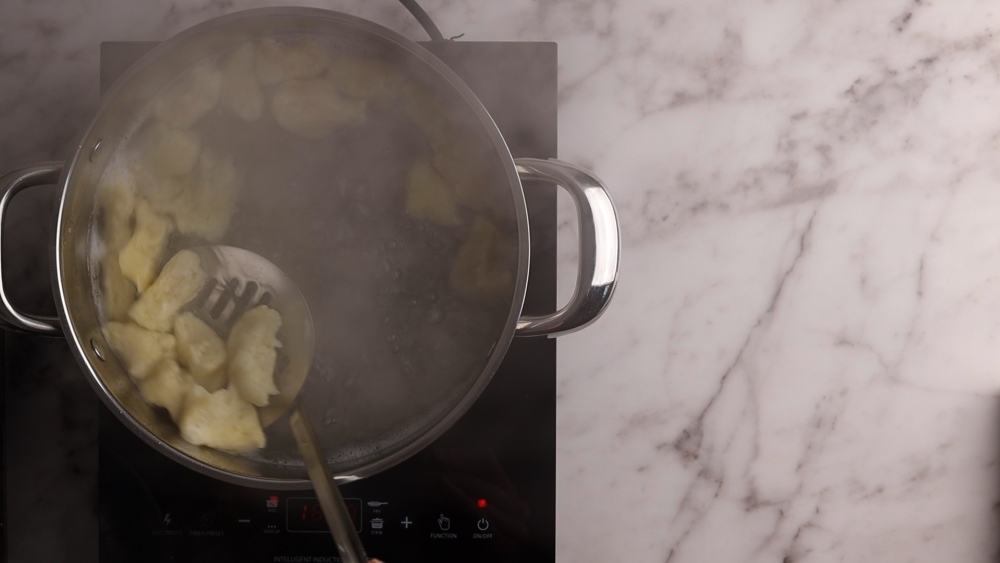Polish Potato Dumplings (Kopytka)
This post may contain affiliate links. Read our privacy policy.
These easy polish potato dumplings are a great alternative to boiled or mashed potatoes. The dumplings come together in less than 30 minutes after boiling the potatoes and make an interesting side to stews, meat-heavy mains, or even on their own if you top them with sauteed onions and maybe some bacon bits.
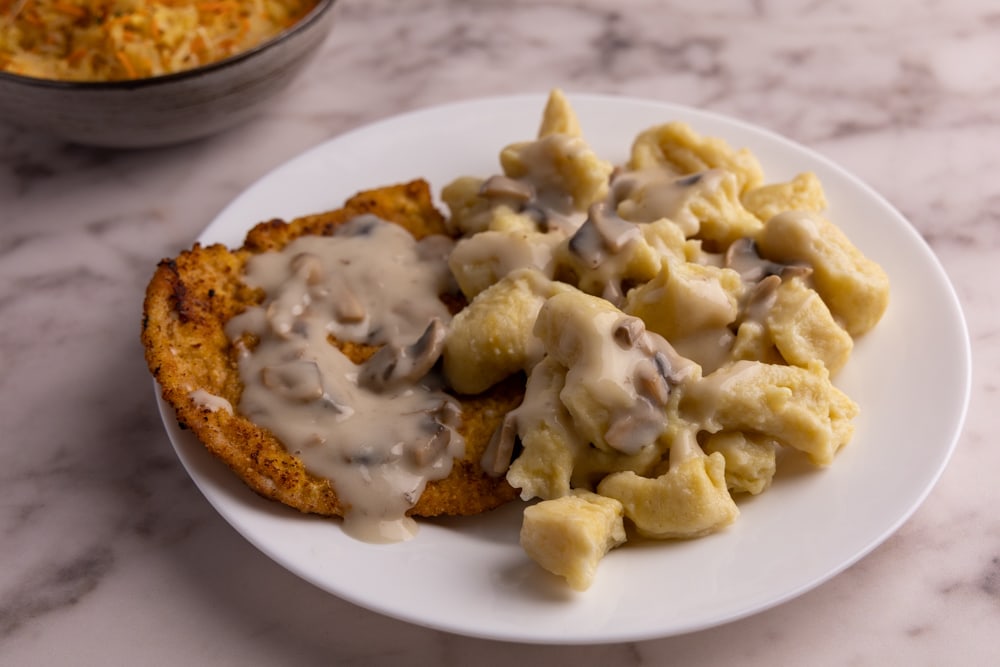
These potato dumplings are super similar to polish lazy pierogi. The only difference is that instead of using farmer’s cheese or ricotta, you’re using boiled potatoes.
(Check out my Silesian dumplings recipe, if you’re looking for other potato-based dumpling recipes.)
The making process is foolproof, so even if you’re not comfortable working with dough, you’ll end up with delicious potato dumplings. The worst that could happen is that the dumplings won’t be identical in shape and size.
(Mine never are.)
If you’re making these polish potato dumplings for the first time, read the ingredients notes, step-by-step instructions, and tips. If you’re a veteran, feel free to jump to the recipe card.
(If you’re familiar with gnocchi, these potato dumplings are super similar. You can learn more about gnocchi in my gnocchi vs. pierogi article.)
Ingredients Notes and Substitutes
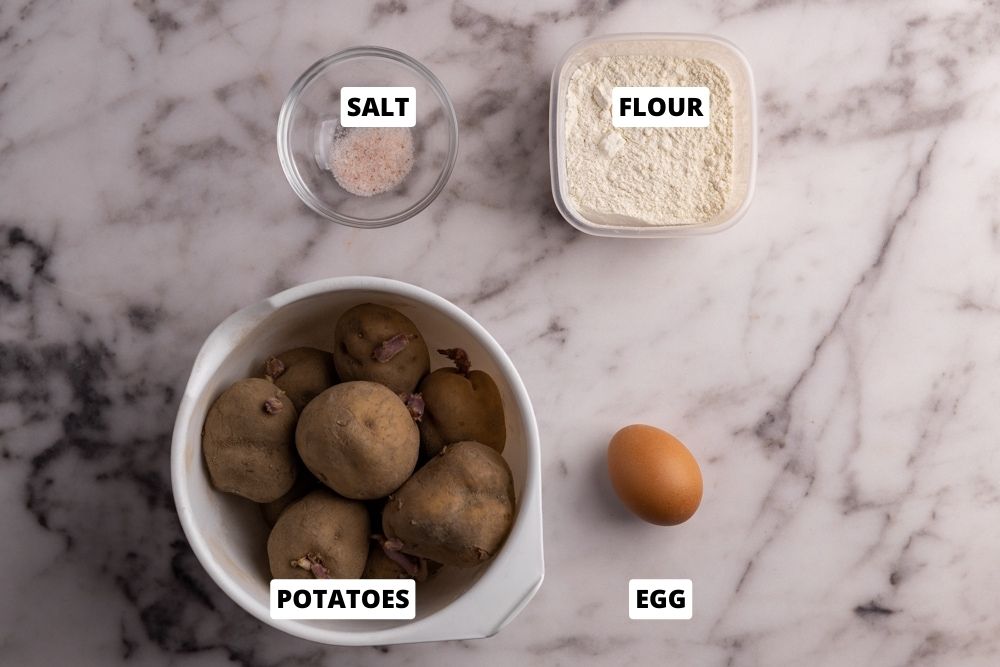
- Potatoes. Use high- or medium-starch potatoes (like Russets, Idaho, Yukon Gold, and the like) for optimal results. Low-starch potatoes need much more flour to form a cohesive dough. Feel free to use leftover boiled potatoes.
- Flour. Use all-purpose flour.
- Egg. A single medium-sized egg helps the dough come together and is more than enough for a pound of boiled potatoes. When scaling the recipe, add the second egg only when the weight of the potatoes is nearing two pounds.
- Salt. Use fine-grain sea salt or regular table salt.
Step-By-Step Instructions
- Mash potatoes. After boiling, drain the potatoes and leave the pot uncovered for another 5 to 10 minutes so the remaining moisture can evaporate. Then mash the potatoes using a potato ricer, masher, or even a fork. Taste if salty enough, and if not, stir in a bit more. If the potatoes are too salty, reduce the amount of salt in the next step.
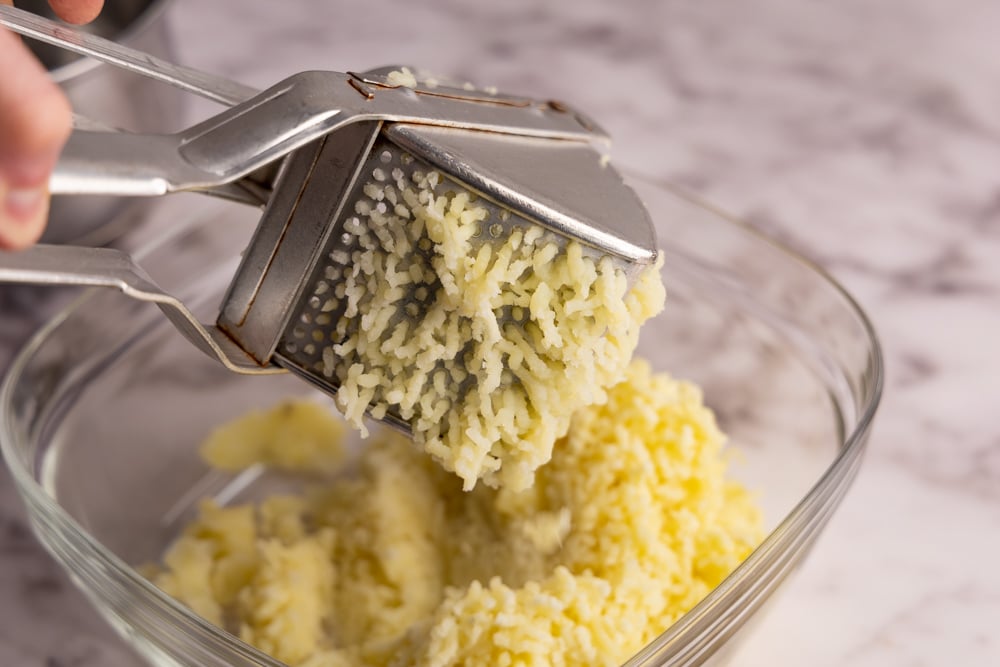
- Combine. Combine the mashed potatoes, salt, egg, and flour in a medium bowl. Stir using a spoon until roughly combined, then finish using your hands. Usually, a minute or two of mixing with hands is enough to make the dough nice and uniform.
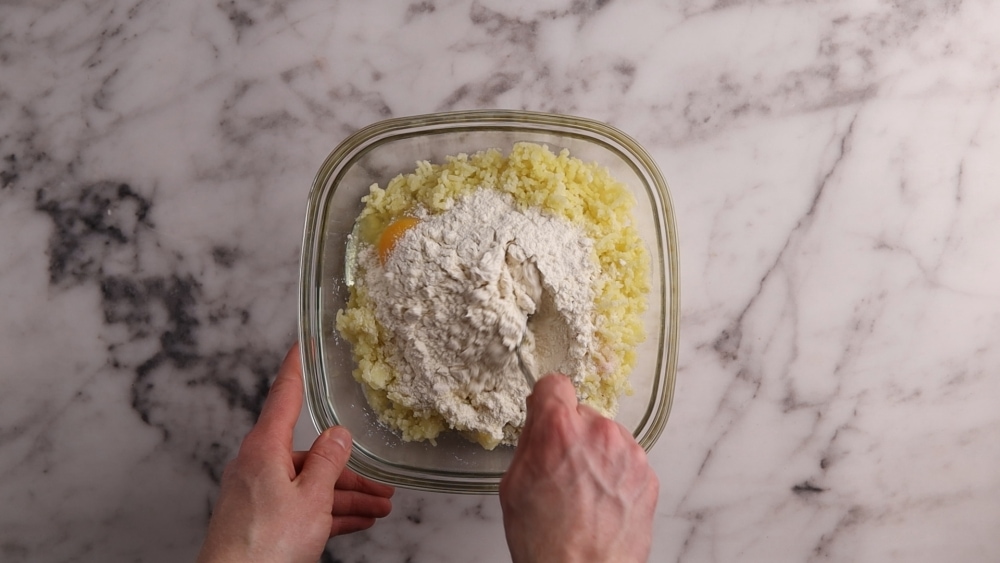
- Boil water. Start boiling salted water in a large wide-bottomed pot or saucepan. Add one teaspoon of salt per 1 quart of water. Yes, you read that right; even though the potatoes are salted and you add the salt to the dough, you still need to add a bit of salt to the water.
- Make dumplings. Spoon about ¼ of the dough onto a well-floured work surface, then roll it into a 1 to 1 1/2-inch-thick rope using floured hands. Add more flour to the work surface if the dough starts sticking. Then cut the rope into 1 to 2-inch pieces using a lightly floured knife and transfer them onto a well-floured surface. It’s not a big deal if the dumplings aren’t uniform or are a bit larger than described. Cover the cut dumplings and repeat with the remaining dough.
 Setup before rolling the dough
Setup before rolling the dough Dough rolled into a rope
Dough rolled into a rope Cutting the rope into dumplings
Cutting the rope into dumplings
- Cook. Once the water starts boiling, lower it to a gentle simmer. Carefully transfer ¼ to ½ of the dumplings (depending on the size of the pot) into the simmering water using lightly floured hands, and give them a gentle stir using a slotted spoon so they don’t stick to the bottom. Once all dumplings float to the surface, let them cook for another 1 to 2 minutes, then remove them using a slotted spoon.
 Cooking dumplings on the surface
Cooking dumplings on the surface Removing cooked dumplings
Removing cooked dumplings
- Serve immediately.
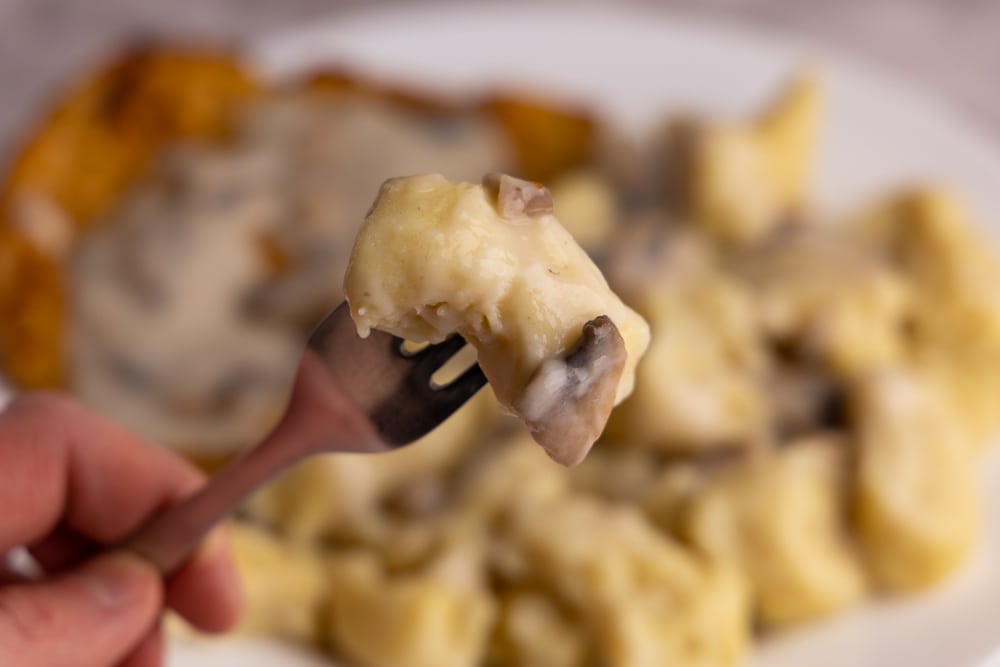
Recipe Tips
- Boil the potatoes as usual. In other words, use the same amount of salt you usually use. You want to have tasty boiled potatoes you’d normally eat as a side or use for mashing.
- Adding a bit of extra flour if the dough is super sticky is okay. This dough usually isn’t as sticky as the dough for polish lazy pierogi, but if it’s too sticky for use, it will benefit from a bit of extra flour. Just make sure you’re adding an extra tablespoon or two, not an extra cup.
- Flour your work surface and hands often if the dough is sticky. Depending on the potatoes, sometimes the dough comes out fairly sticky, and you’ll want to have some flour handy and use it as often as necessary.
- Start boiling the water early. Start the pot on the stove before rolling out the dough or even before you start preparing it. Boiling a big pot takes quite a while, so it’s best to start early. You don’t want to wait for the water to boil when you have all your dumplings dough rolled out and cut.
- Once you bring the water with the dumplings back to a boil, all you need is a light simmer. If it boils violently, it might cause the potato dumplings to break into smaller chunks or break apart completely.
- If you form the dumplings well before boiling them, cover them with a damp kitchen towel and make sure the surface is well-floured. This way, they don’t dry out or stick to the surface and become difficult to remove for boiling.
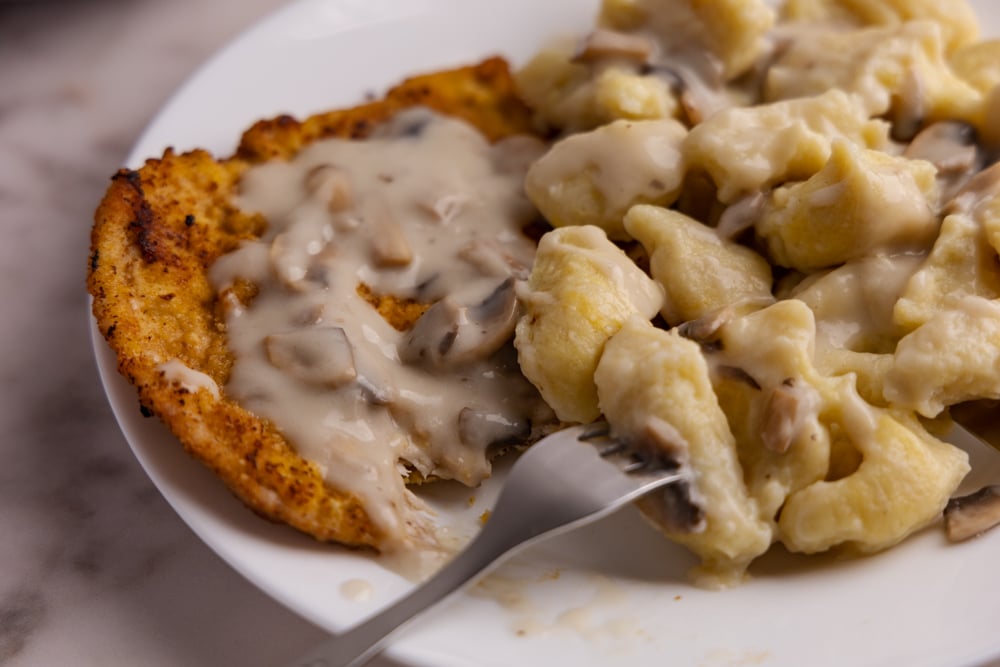
Variations
- Brown them in a skillet. Instead of serving these straight from the pot, you brown them in a skillet first. Melt 1 to 2 tablespoons of butter in a non-stick skillet and once everything is nice and hot, move the drained dumplings straight to the skillet and cook until lightly browned on both sides. Be careful, as the water from the dumplings might cause spatters. Feel free to first sautee an onion in that same skillet for extra flavor.
What to Serve With Polish Potato Dumplings
- Sauces. These dumplings are pretty good straight out of the pot, but topping them with a sauce takes things to the next level. Melting a few teaspoons of butter is the easiest option. Add and sautee an onion or two, maybe add some bacon bits, and you’ve got yourself a great topping. Of course, any pan sauce or something dedicated, like a simple mushroom sauce I used when shooting the photos, also works great.
- Meaty mains. Any main that works well with boiled potatoes should also work well with these potato dumplings. Polish breaded pork chops, one of the polish classics, is a great option, especially if you accompany it with a sauce and top both.
- Stews. Something like a Polish goulash or any pork or beef stew works great with these dumplings, as it doubles as a sauce.
- Salads. If you pair these dumplings with a meat main, add a light salad with raw veggies to make it a complete meal. If you’re looking for something quick and simple, check out these recipes: polish cucumber salad, polish sauerkraut salad, or polish tomato salad.
Storage & Reheating
- Storage. Lightly coat any leftovers with melted butter or neutral oil so the dumplings don’t stick together. If they’re still warm, drop a couple of slivers of butter here and there and coat everything once the butter melts. Don’t cram the container so they don’t stick. Refrigerate in a tightly sealed container for up to 4 days.
- Reheat. Melt one to two tablespoons of butter in a non-stick skillet (or use a neutral oil), spread the dumplings in it, and cook on low to medium heat for 8 to 10 minutes. Give the skillet a shake every now and then so the dumplings don’t stick, and flip them halfway through so they’re warmed evenly and browned on both sides.
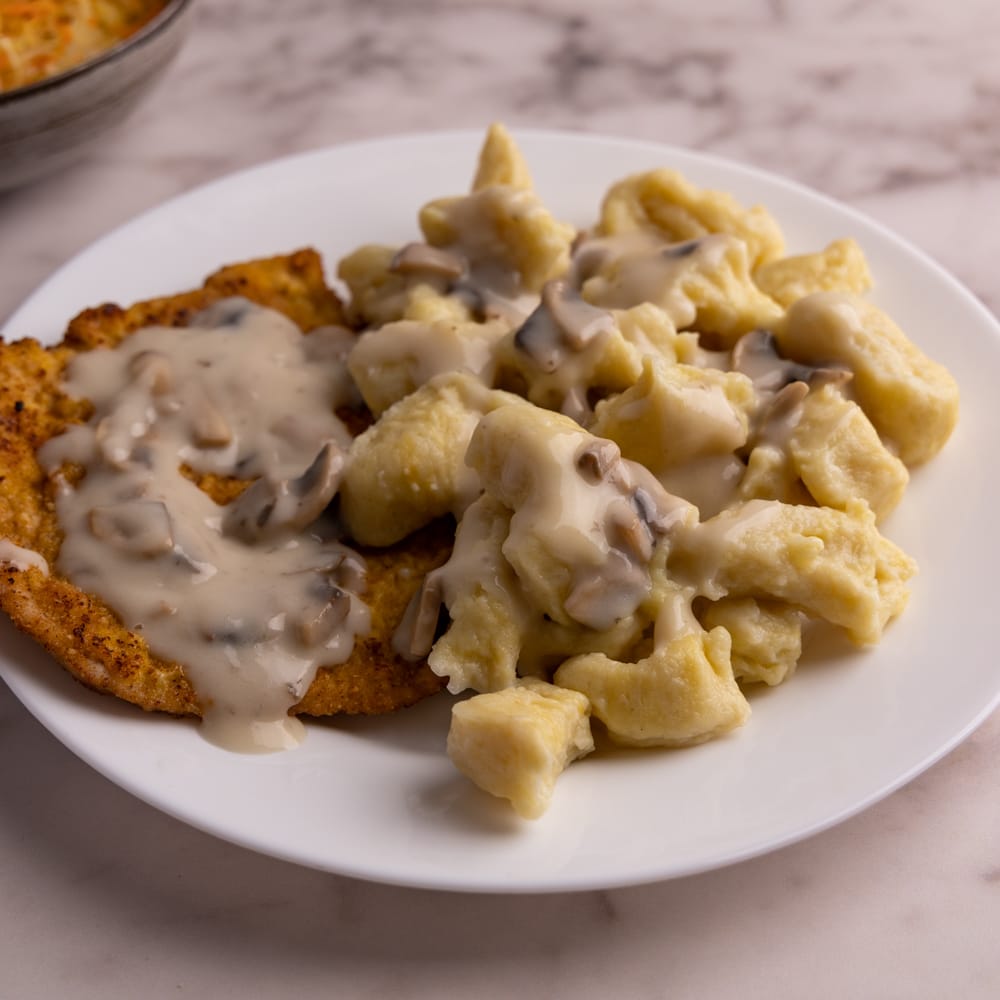
Ingredients
- 1 pound boiled potatoes ( 450 grams)
- 1 cup all purpose flour (~120 grams) plus more for hands and surface
- 1 egg
- ½ tsp sea salt plus more for salting water
Instructions
- Mash potatoes. Make sure the potatoes are well drained, then mash them using a potato ricer or masher. If you don't have one on hand, a fork and some elbow grease will get the job done. Taste for saltiness and add more salt if needed.
- Combine. Combine the mashed potatoes, salt, and egg, and flour in a medium bowl. Stir using a spoon until roughly combined, then finish using your hands.1 pound boiled potatoes ( 450 grams), 1 egg, ½ tsp sea salt, 1 cup all purpose flour (~120 grams)
- Boil water. Start boiling salted water in a large wide-bottomed pot or saucepan. Add one teaspoon of salt per 1 quart of water.
- Make dumplings. Spoon about ¼ of the dough onto a well-floured work surface, then roll it into a 1 to 1 1/2-inch-thick rope using floured hands. Add more flour to the work surface if the dough starts sticking. Then cut the rope into 1 to 2-inch pieces using a lightly floured knife, and transfer them onto a well-floured surface. Cover the cut dumplings and repeat with the remaining dough.
- Cook. Once the water starts boiling, lower it to a gentle simmer. Carefully transfer ¼ to ½ of the dumplings into the simmering water using lightly floured hands, and give them a gentle stir using a slotted spoon so they don't stick to the bottom. Once all dumplings float to the surface, let them cook for another 1 to 2 minutes, then remove using a slotted spoon.
- Serve immediately.
Video
Notes
- When boiling the potatoes, use as much salt as you normally would. Or simply use leftover boiled potatoes.
- Adding a bit of extra flour if the dough is super sticky is okay. Just make sure you’re adding an extra tablespoon or two, not an extra cup.
- The dough is supposed to be a bit sticky, so have some flour nearby when rolling and cutting the dumplings. Lightly flour your work surface, hands, and the knife you use to cut the rope to pieces. Otherwise, the dough will stick to everything, and it’ll be a mess.

